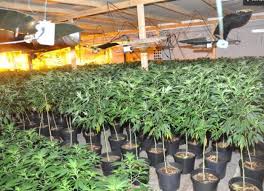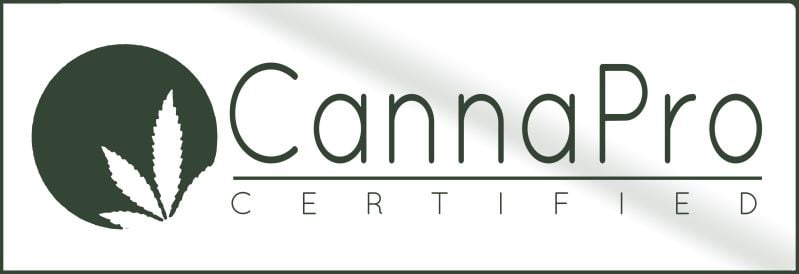
The European cannabis seeds market presents the world’s largest opportunity to expand in the cannabis space. The tides are shifting as countries have increasingly moved toward legalising medical cannabis, bringing greater visibility and credibility to this growth industry. And although the health and financial benefits of medical cannabis have been well publicised, what has yet to be determined is how control and classification of this category will unfold.
Change has been tirelessly championed by patients and advocates across Europe who have lead successful campaigns on reform both publicly and privately and are now finally seeing the early signs of change. The public debate for medical cannabis seeds legalisation is intentionally being separated in Europe between recreational and medical.
While pockets of Europe are famous for their tolerance of recreational cannabis, there has been no significant regulatory proposals for the legalisation of cannabis seeds for recreational use anywhere in Europe. This is not to say that cannabis will not be legalised for recreational use in the next three years but that it is simply much further down the agenda.
A brief look at Medical Cannabis
The beauty of cannabis is that all it is doing is supplementing the body’s natural cannabis system called the endocannabinoid system. Humans, as well as many other animals, have this natural system throughout the body. The system, in the brain for example, has an effect on memory, control of movement, modulation of pain, development of nerve growth and plasticity, and the adaptability of the nervous system. It has an influence on sleep, appetite, anxiety and social behaviour to name but a few important functions.
There are two main chemicals in the cannabis seeds plant that are known to be the leading components that have the most medical benefit; THC and CBD. THC cannabis seeds is psychoactive, and this gives individuals the cannabis seeds“high”. CBD cannabis seeds is not psychoactive and indeed, to an extent, counteracts the “high” of the THC. Thus, the balance between THC and CBD cannabis seeds is one of the most crucial factors in understanding what effects will be seen in a particular cannabis variety.
We know that both CBD and THC cannabis seeds have medicinal properties. One of CBD’s cannabis seeds most important effects is as an anticonvulsant (An anticonvulsant is any one of a class of drugs used to prevent or alleviate convulsions). However, to illustrate the complexity of the plant, whilst CBD cannabis seeds is a very potent anticonvulsant, many children with epilepsy respond even better when there is a little THC added into the medicine. This is a good example of how the whole plant has a better effect than individual components. This is known as the ‘entourage effect’. The entourage effect refers to the combined effect of the cannabinoids, terpenes, and other chemical compounds in cannabis. These compounds work together to produce an effect that is greater than the sum of their parts.
Cannabis Legislation
Medicinal Cannabis Legislation
Recreational Cannabis Legislation
Industrial Cannabis Legislation
Healthcare Analysis
Despite a surge in cannabinoid research and medical cannabis testing, a huge gap still exists between medical cannabis legislation and medical cannabis applications. For the European medical cannabis model to succeed, three main barriers need to be overcome.
1. Lack of knowledge among health professionals
When a new drug is introduced to the market, medical representatives from pharmaceutical companies visit physicians, giving presentations of the benefits of the new drug. This is known in the medical community as “continuous education”. Pharmaceutical companies, that hold valid patents, tend to deploy representatives to educate physicians on the new and existing treatments, while those without patent protection create incentive-oriented presentations on their products. Medical cannabis is a generic drug that holds no patent protection.
With cannabis, none of the companies employ or deploy medical representatives, and it is unknown whether cannabis companies would be even allowed to do such a thing. Instead, the responsibility to educate the health community about cannabis treatments lies with the doctors themselves.
2. Lack of knowledge on cannabis
We are witnessing a rapid growth of knowledge regarding cannabis and its medical properties. Just last year, it was found that CB receptors in the brain can easily accommodate tens of molecules at one time, explaining the previously observed entourage effects that are associated with cannabis use. However, it’s too soon for the scientific use of the entourage effect, as the exact effects experienced by different mixtures of phytocannabinoids remain unknown.
It is also still unclear which dosage is needed to treat specific diseases. With the lack of pharmaceutical preparation and lack of knowledge or data around the dosage of cannabinoids, cannabis treatments are still undeveloped by modern medicine standards.
3. Legal obstacles
All medicinal products are heavily regulated, and physicians are monitored more than any other profession. There are several laws, sub-laws and guidelines that need be amended before physicians can easily prescribe cannabis to patients. In addition, the industry still needs medical technology that can monitor the medical cannabis system and update the practice of prescribing narcotics.
External rules can affect prescriptions as well, for instance, private parties are banned from exercising any influence over physicians’ prescriptions. This law was established to diminish the influence of the pharmaceutical industry. However, in the case of cannabis, these mechanisms oppose the development of cannabis treatments, as physicians’ prejudices or ideological issues might become a major obstacle in prescribing cannabis.
UK Cannabis Overview
Medical cannabis in the UK is legal but very limited with Nabilone and Sativex the only cannabis-based medicines licensed for prescription. In June 2018, the UK government announced a review of cannabis-based medicines. The government will consider licence applications for the use of cannabis-based medicines but only in ‘exceptional cases’ i.e. where there is an unmet clinical need. The review follows the temporary authorisation on 19 June for two patients with childhood epilepsy (Billy Caldwell and Alfie Dingley) to use medical cannabis.
On the 10th October 2017, a new bill calling for the legalisation of cannabis for medical purposes was introduced to parliament. The bill was filibustered in February 2018, with a second hearing delayed until July 6th. Pressure was mounted on the UK government after two high-profile campaigns, for patients Billy Caldwell and Alfie Dingley, stressed the need for urgent reform. In April 2018, the Dingley family applied for a licence to use medical cannabis oil to treat the six-year old’s condition - severe epilepsy. Two months later the Caldwell family attempted to “openly smuggle” cannabis oil from Canada to the UK to treat Billy, 12, who suffered from the same condition.
The two incidents mobilised mainstream media support and created public awareness around the urgency for medical cannabis reform. In response, Home Secretary, Sajid Javid, announced in the House of Commons that the Home Office would provide 20-day licences to both Billy Caldwell and Alfie Dingley, while they consider a more long-term solution. The decision came after the Home Office and the Ministry for State and Social Care consulted the patient’s doctors, who urged them to use their emergency powers to license the Schedule 1 drug.
It is estimated that there are as many as 3.6 million active cannabis users in the UK, contributing to an estimated black-market value of up to €6b per year. In addition, our research shows that medical cannabis can treat up to 2.9 million patients in the UK. This demonstrates the volume of the consumer base that awaits a reform in legislation, indicating that the UK could still capitalise and flourish within the legal cannabis industry.
Global Industry Insights
Cannabis is now regulated for consumption in over 16 country markets, although the sector is still in its infancy in Europe. We look at the key insights from the regulated markets across the globe to understand the likely consequences in the nascent legal markets of Europe.
If market forces prevail and legislators permit the development of a legal cannabis market in Europe, then Europe could expect to mimic many of these characteristics of the global cannabis industry.
That said, different regulatory and cultural norms in Europe will also shape the medical market. For instance, medical cannabis consumers expect a more standardised, medicalised product, and regulated non-medical markets are not likely to emerge soon.


DISCLAIMER: To comply with UK law, Discount Cannabis Seeds sells Cannabis Seeds for souvenir and collection purposes only. Discount Cannabis Seeds accepts no liability for customers purchasing them for any other purposes.

Office Address:
PLEASE NOTE OUR BUSINESS IS ONLINE ONLY, NO SEEDS ARE FOR SALE AT OUR OFFICE ADDRESS
49 Station Road
Polegate
East Sussex
BN26 6EA
Email:
[email protected]

Find out about our experience with Trustpilot > DCS & TRUSTPILOT

Discount Cannabis Seeds have been awarded certification by Cannabis Professionals, CannaPro - the trade association for the UK’s cannabis industry.
Copyright © 2024,


